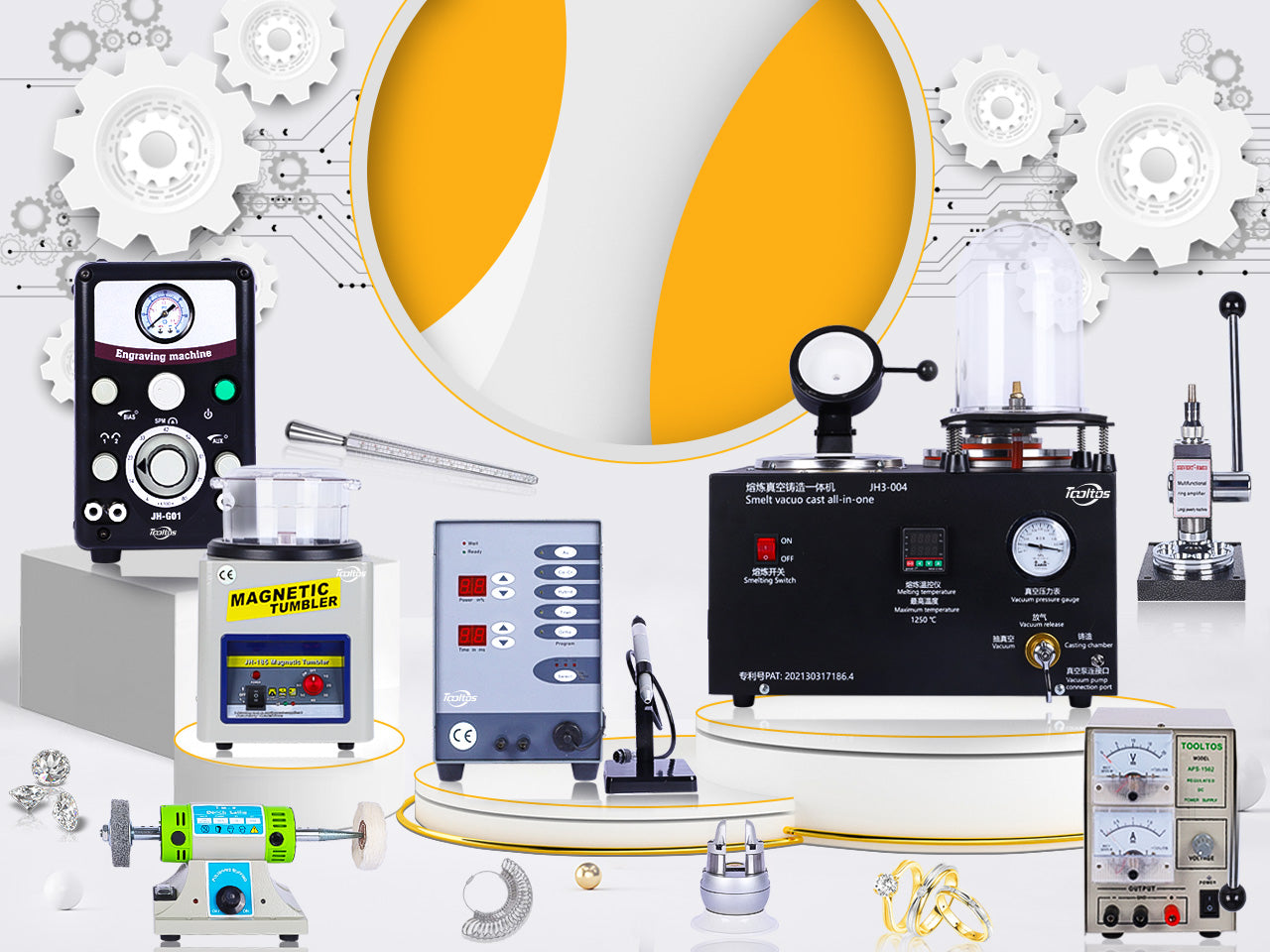A rolling mill is an essential tool in jewelry making used for shaping, reducing, and texturing metals. It consists of two hardened steel rollers, positioned parallel to each other, that rotate in opposite directions. The metal sheet or wire passes through these rollers, transforming its thickness, shape, or surface texture based on the jeweler's needs. Rolling mills are versatile tools and come in various configurations to accommodate different tasks.
Types of Rolling Mills
- Manual Rolling Mills: Operated by hand using a crank; ideal for small-scale projects.
- Powered Rolling Mills: Equipped with a motor for consistent and efficient rolling; suitable for larger-scale or frequent use.
- Combination Rolling Mills: Feature both flat and grooved rollers, allowing for sheet and wire rolling.
- Texture Rolling Mills: Designed to add patterns or textures to the metal surface using etched rollers.
Common Uses of a Rolling Mill in Jewelry
-
Thickness Reduction:
- Flattening metal sheets or reducing the gauge of wire to the desired thickness.
- Efficiently produces uniform and precise results.
-
Texturing Metal:
- Adds patterns to metal using texture plates or organic materials like leaves, fabrics, or lace.
- Ideal for creating unique, decorative surfaces for jewelry.
-
Wire Shaping:
- Shapes and reduces the size of wire by passing it through grooved rollers.
-
Metal Hardening:
- Compresses the metal, increasing its density and strength.
-
Flattening and Straightening:
- Smoothens metal after it has been soldered, worked, or cast.
-
Bimetal Lamination:
- Joins layers of different metals to create bimetal sheets for unique designs.
How to Use a Rolling Mill
- Prepare the Metal: Clean and anneal the metal to make it soft and workable.
- Adjust Rollers: Set the gap between the rollers based on the desired thickness or task.
- Feed the Metal: Pass the metal through the rollers, turning the crank or engaging the motor.
- Monitor the Process: Adjust the rollers gradually to avoid over-compressing or damaging the metal.
- Texture Application: Place texture materials on the metal and roll them through together for patterning.
Tips for Using a Rolling Mill
- Anneal Often: Regular annealing prevents cracking or brittleness during rolling.
- Use Lubrication: Apply a lubricant to rollers and metal to reduce friction.
- Clean Rollers: Keep the rollers free of debris to avoid unwanted marks on the metal.
- Test on Scrap Metal: Practice on scrap pieces to perfect your technique.
Benefits of a Rolling Mill
- Increases efficiency and precision in metalworking.
- Reduces the need for pre-purchased sheet or wire, saving costs.
- Provides creative opportunities through texturing and shaping.
A rolling mill is a valuable investment for jewelers who frequently work with metal, offering versatility and professional results.


0 commenti